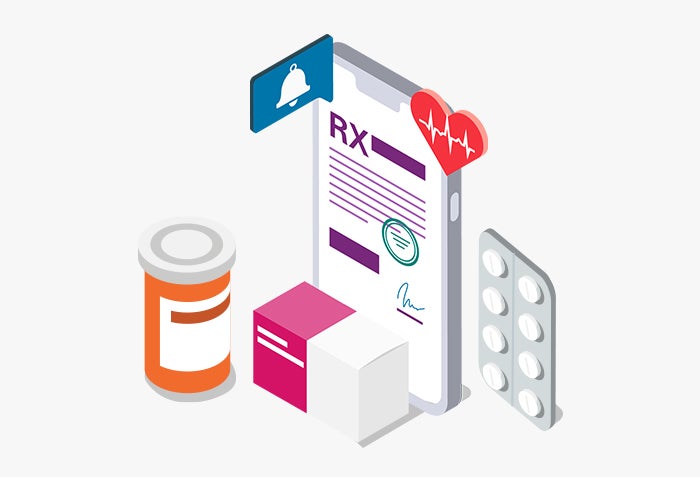Still handing your patients a clipboard to collect admissions packets, consents and patient questionnaires? If so, it’s time to upgrade your forms processes.
Many hospitals still rely on outdated and inefficient paper forms. Not only does using hard copy forms and consents expose your organization to potential compliance and reputational risks, it also likely means you’re spending precious dollars on printing and HIPAA-compliant records disposal.
Beyond that, your patients want a more modern experience. And if other hospitals in your community are already giving it to them, you’ll need to replace your paper-based processes with digital solutions to stay competitive.
Here are four reasons why now is the perfect time to expand your digital strategy by electronically collecting patient forms and e-signatures.
1. Mitigate compliance and reputational risks
Electronic consents minimize the potential for errors. A study in JAMA Surgery found that electronic consent forms had only a 1% error rate, compared to a 32% error rate for paper forms. Paper form errors included missing patient and surgeon signatures, incorrect dates and times, and illegibility.
What’s more, paper-based informed consents can quickly become outdated. And with no easy way to catch the obsolete forms, healthcare organizations risk major problems down the line.
Ineffective forms processes mean organizations can run afoul of regulations, policies and Centers for Medicare and Medicaid Services (CMS) requirements, which can lead to Joint Commission citations, audits and investigations. The possibility of losing accreditation or dealing with reputational damage looms large among the concerns of many hospital quality, compliance, clinical and information-technology leaders.
However, with digital forms and e-signatures, you and your team can feel confident that you’re presenting the right forms to the right patients at the right time. Plus, streamline electronic signatures and route them into each patient’s chart so you never lose track.
2. Cut hard costs and avoid penalties
The average 1,500-bed hospital prints more than eight million pages every month, which adds up to nearly $4 million per year in hard costs. Printing fewer documents can create notable savings for hospitals that still rely mostly on paper.
And while hospital staff will always need to use a certain amount of paper, printing anything that contains protected health information requires organizations to pay for HIPAA-compliant document destruction or face steep fines and penalties. But proper medical record disposal adds up, too—monthly charges for large-scale shredding can run $1,500 or more.
Fortunately, most forms and consents don’t need to be printed, especially if your hospital has a digital consent-management tool. Digitally capturing e-signatures at the bedside allows your staff to securely import forms into patients’ charts seamlessly—no printing required.
3. Offer a more convenient, tech-enabled patient experience
Imagine how surprised you’d be if you used a rideshare app, and the driver expected you to pay with a paper check. That’s what it’s like for patients who’ve already used digital registration and scheduling tools, but are then asked to sign paper forms before a procedure.
Patients are more than ready to use technology to manage their health, making hospitals’ digital front doors even more important than ever. Giving patients the experience they expect is essential to improving the patient experience.
Most digital front door strategies focus on the beginning of the patient journey: registration, scheduling, copays, etc. But there’s so much more hospitals can do to satisfy patients’ hunger for technology—including digitizing forms and consents.
Considering how important improving the patient experience is to your hospital’s quality reporting, bottom line and ability to retain patients, investing in a solution that goes beyond typical digital front door capabilities and fully integrates technology into all your hospital’s processes can make all the difference.
4. Stay competitive in a changing industry
Upgrading the patient experience isn’t only about ensuring that your hospital meets its quality measures. It’s also an essential differentiator in an increasingly competitive healthcare landscape. Simply put, healthcare organizations that don’t invest in a tech-driven patient experience risk losing patients to competitors that appear more innovative.
Familiar retail companies like Amazon, CVS and Walgreens have joined the healthcare space, putting even more pressure on healthcare organizations to innovate. At the same time, health system mergers and acquisitions are creating larger networks of care that can spend more on patient acquisition and retention.
Demonstrating strategic agility is vital to any organization’s long-term success. When you are known in your community for innovation—such as eliminating paper forms in favor of digital versions—you can ensure that your organization’s name will be top of mind for patients looking for excellent care.
Letting go of your traditional paper-based workflows may seem daunting, but you’ll quickly see the benefits of modernizing how you handle forms and consents. Don’t wait for a problem to arise or for patients to start going elsewhere: Bring digital forms into your hospital today.
Ready to reduce risk, cut costs, improve the patient experience and stand out from the crowd? Phreesia’s digital forms solution can help.

Go paperless with Access eForms
Maximize efficiency and collect information faster, without printing or scanning.



